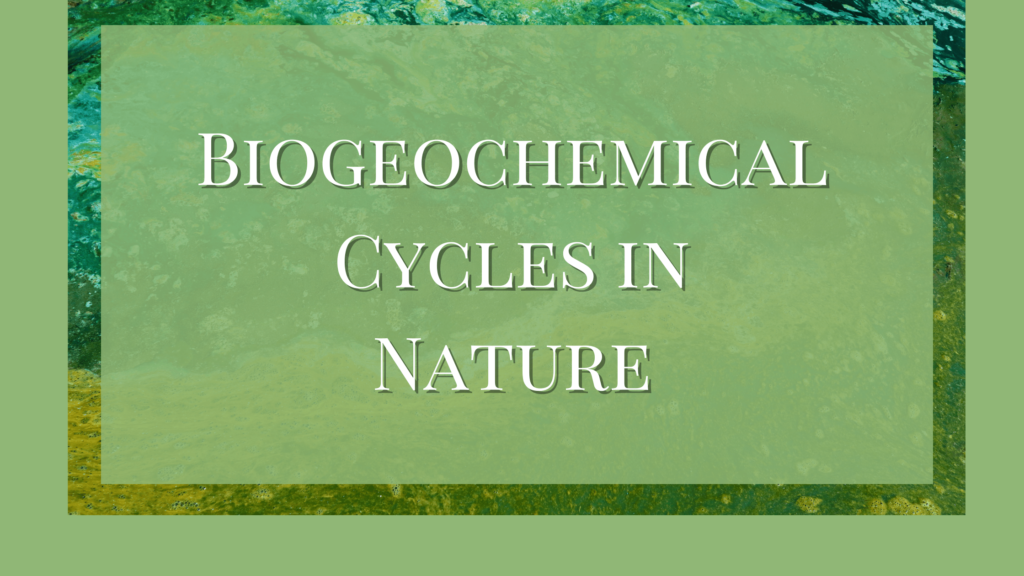The various biogeochemical cycles in nature are more or less a circular path that brings about the circulation of chemical elements, including all essential elements of protoplasm from the environment to organisms and back to the environment.
Biogeochemical cycles are processes involving the movement and transformation of different elements and compounds through living organisms and their environment. The environment includes the Earth’s atmosphere, and other components of the planet’s crust, such as rocks, soil, and water. These cycles are essential for maintaining the balance of different nutrients in the ecosystems.
Types of Biogeochemical Cycles in Nature
Biogeochemical cycles are also known as nutrient cycles. It depicts the path of various nutrients through different mediums such as air, water, living organisms, rocks, soil, etc. From the biosphere point of view, the biochemical cycle is of two types.
1. The gaseous cycle has air as its greater reservoir that regulates the cycles. The various gaseous cycles are,
2. The sedimentary cycle has its reservoir in the earth’s crust. The cycles included here are,
- Sulfur cycle
- Phosphorus cycle
- Cycles of heavy metals
- Hydrocarbons
Both gaseous and sedimentary cycles involve biological and non-biological agents. Both these agents require water to complete the cycle. Each cycle specifies the movement of that particular element through different reservoirs.
Carbon is mainly found in the atmosphere as carbon dioxide. The plants absorb it during photosynthesis and use it to build food and tissues. During respiration, carbon is released back into the atmosphere as carbon dioxide. This process is known as the biological carbon cycle.
Similarly, the nitrogen cycle involves the conversion of atmospheric nitrogen into useful forms for plants and animals. This conversion takes place through processes such as nitrogen fixation, nitrification, and denitrification.
Importance of Study of Biochemical Cycle
The study of various biochemical cycles shows the intimate relationship between different organisms. Each of them in an ecosystem requires many substances such as carbon, oxygen, nitrogen, hydrogen, water, etc. They depend on each other for the same.
Thus, plants and animals depend on nitrogen-fixing bacteria to convert atmospheric nitrogen into soluble nitrates while these bacteria depend on nitrifying bacteria to return the nitrogen to the environment.
This type of interdependence is a part of what is known as the web of life. It is a characteristic of all ecosystems.
Conclusion
Overall, biogeochemical cycles play a crucial role in regulating the distribution and availability of essential elements and compounds necessary for life on Earth. They help maintain the balance of nutrients, energy flow, and environmental conditions, ensuring the sustainability and functioning of ecosystems.
References
- Libretexts. (2022, September 5). 7.3: Biogeochemical Cycles. Biology LibreTexts.
- Shukla, R.S. and Chandel, P.S. (2001) Plant Ecology. S. Chand and Company Ltd., New Delhi.
- Verma, P.S., Agarwal, V.K. (1999). Cell Biology Genetics Molecular Biology Evolution and Ecology. New Delhi: S.Chand Co.(Pvt) Ltd.




